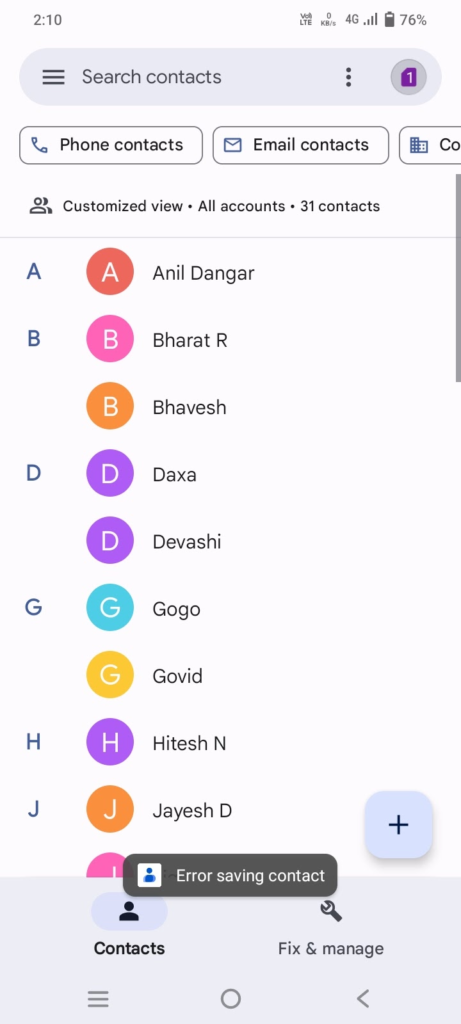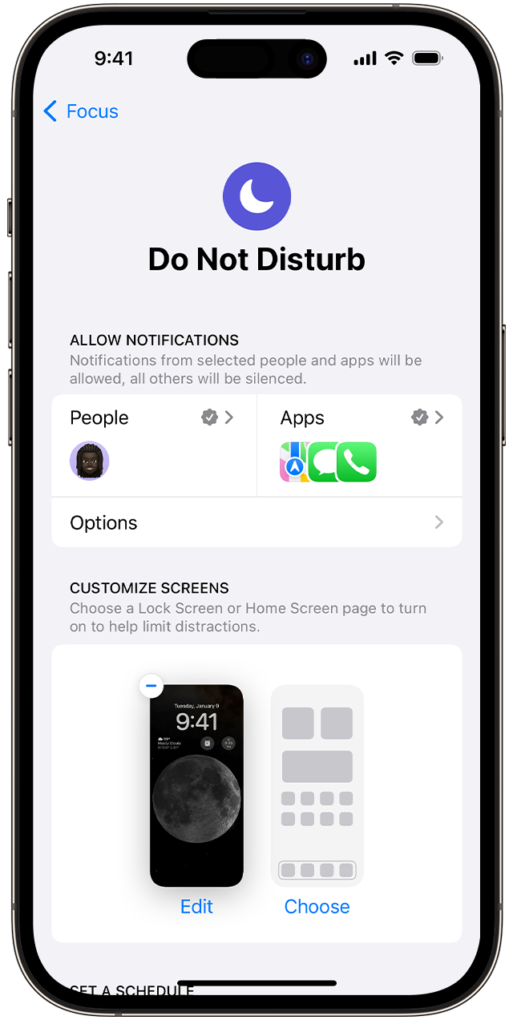Communication has become an integral part of our daily lives, and text messages are a cornerstone of modern connectivity. Text messaging has evolved into a primary mode of communication, offering quick and convenient ways to connect with others.
The expectation of instantaneous communication has heightened the frustration when messages fail to deliver. The reliance on text messages for both personal and professional interactions amplifies the impact of delivery issues, underscoring the need for a comprehensive understanding of potential obstacles.
However, the frustration of texts not delivering to a specific person is a common ordeal that many individuals encounter. This issue can lead to misunderstandings, missed opportunities, and strained relationships.
In this article, we will delve into the importance of effective communication via text messages and explore the myriad reasons why texts may not be reaching their intended recipients.
Table of Contents
Importance of Effective Communication
Effective communication is very important for successful relationships, be it personal or professional. Text messages serve as a vital means for expressing thoughts, sharing information, and maintaining clear connections. When messages go undelivered, it can lead to confusion, anxiety, and strained relations. Recognizing the significance of text-based communication highlights the urgency of addressing and resolving delivery issues promptly.
Also Read – What Does ONB Stand for in Texting?
Network Connection Issues

Lack of Cellular or Wi-Fi Signal:
Without a stable network connection, messages cannot be transmitted. Issues such as being in an area with poor reception or having inadequate cellular or Wi-Fi signal can impede message delivery.
Poor Network Coverage in Certain Areas:
Geographical factors can play a role, especially in remote or rural areas where network coverage may be limited. Identifying such locations and adjusting expectations accordingly can mitigate delivery frustrations.
Temporary Network Outages or Maintenance:
Network outages, whether planned maintenance or unexpected disruptions, can temporarily disrupt communication channels. Staying informed about potential outages in your area aids in understanding and addressing the issue.
Recipient’s Device Problems
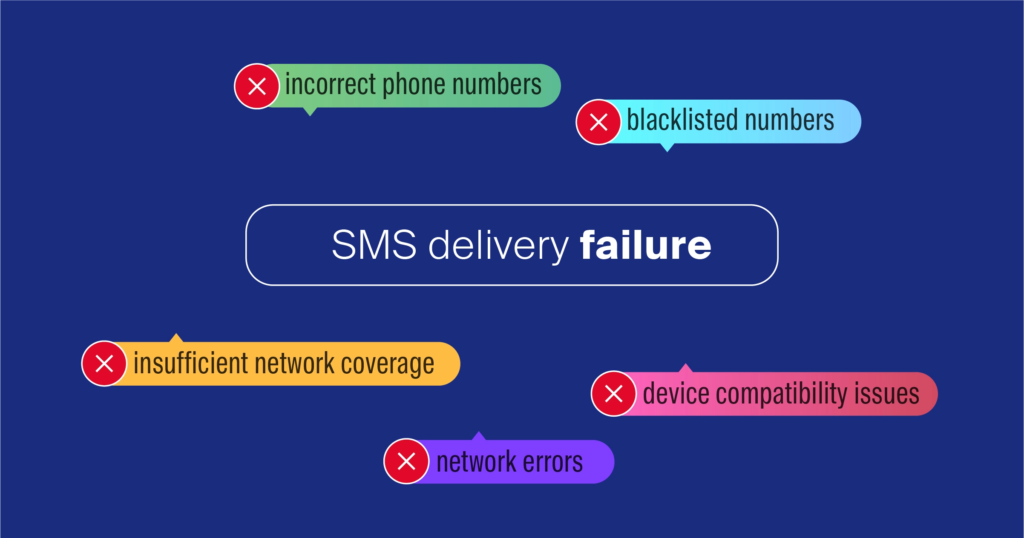
Recipient’s Phone Turned Off or in Airplane Mode:
A simple yet crucial factor, a turned-off phone or airplane mode can prevent message reception. It is important to be aware of the device status for effective communication.
Device Memory Full, Hindering Message Reception:
Limited device storage can impede the download and receipt of messages. Make sure you manage the device storage to enhance message delivery.
Software Glitches or Bugs Affecting Message Delivery:
Updates and software patches are essential to addressing bugs or glitches that may hinder message delivery. Regularly updating devices and apps is key to ensuring seamless communication.
Blocked Contacts
Recipient Has Blocked Your Number:
Intentional blocking can be a result of conflicts or misunderstandings. Communication breakdowns need to be addressed and resolved for messages to be delivered successfully.
Accidental Blocking of Your Number by the Recipient:
Inadvertent blocking can occur, and communication gaps can arise as someone unintentionally blocks your number. Clarifying the situation with the person is crucial in such cases.
Deliberate Blocking Due to Previous Conflicts or Misunderstandings:
Past disputes or misunderstandings may lead to deliberate blocking. Having clear communication will solve conflicts and are very essential for eliminating such issues.
Also Read – 4 Do’s and Don’ts of SMS marketing
Message Settings
Message Settings Configured to Filter Unknown or Unfamiliar Contacts:
Automatic filters may categorize messages from unknown contacts as spam. Adjusting message settings to allow communication from unfamiliar contacts resolves this issue.
Customized Message Preferences, Such as Do Not Disturb Mode:
People-specific settings, such as do not disturb mode, can impede timely message delivery. Awareness of the person’s preferences is crucial for effective communication.
Unread Message Notifications Disabled or Muted:
Disabling or muting notifications can result in messages going unnoticed. Encouraging a person to review their notification settings can enhance message visibility.
Network Restrictions
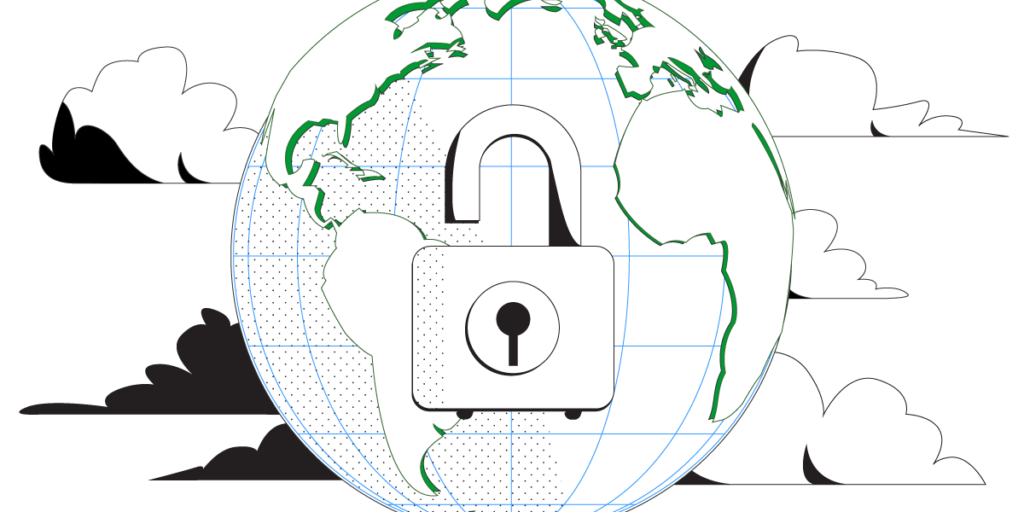
Corporate or Educational Network Restrictions Blocking Certain Communications:
In professional or academic settings, network restrictions may limit communication channels. Understanding and adhering to organizational policies can mitigate these issues.
Parental Controls or Restrictions on the Recipient’s Device:
In the case of kids and children, parental controls may restrict communication. Collaboration with parents or guardians is essential for resolving such restrictions.
Privacy Settings Preventing Receipt of Messages from Unknown Senders:
Stringent privacy settings may prevent messages from unknown senders. Encouraging a person to review and adjust their privacy settings from one person to another helps in effective communication.
Also Read – The New Normal in Networking Technology
App-Specific Issues
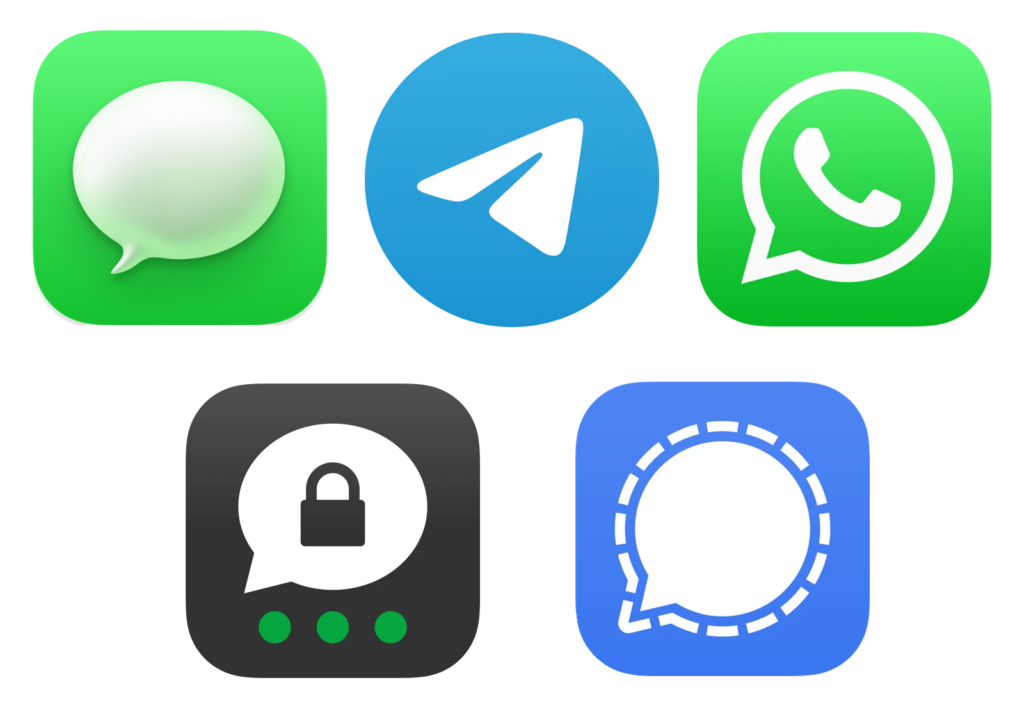
Outdated Messaging App Version Causing Compatibility Issues:
Compatibility issues can arise from using outdated app versions. Regularly updating messaging apps ensures compatibility and smooth message delivery.
App Permissions Not Granted for Message Delivery:
Apps may require specific permissions for optimal functionality. Verifying and granting necessary permissions resolves issues related to message delivery.
Service Disruptions or Maintenance on the Messaging Platform:
Scheduled maintenance or unforeseen service disruptions can impact message delivery. Staying informed about platform status helps in understanding and addressing these disruptions.
Carrier-Related Problems

Carrier-Specific Network Issues Affecting Message Delivery:
Carrier-related issues can impede message transmission. Staying informed about carrier status and potential disruptions enables proactive resolution.
Billing or Account-Related Issues Impacting Communication Services:
Unsettled bills or account issues may lead to service interruptions. Regularly monitoring and addressing billing concerns ensures continuous communication services.
Incompatibility Between Sender and Recipient Carriers:
Inter-carrier compatibility is important for seamless communication. Confirming compatibility between sender and recipient carriers minimizes delivery obstacles.
Contact Information Errors
Incorrect Phone Number or Contact Details Saved in Sender’s Device:
Accurate contact information is foundational for successful communication. Verifying and updating the right contact details prevents miscommunication.
Contact Information Outdated or Changed Without Notification:
Changes in contact information without notification can lead to message delivery failures. Regularly updating contacts ensures the accuracy of communication channels.
Typographical Errors or Misinterpretation of Contact Details:
Attention to detail is paramount. Ensuring the absence of typographical errors or misinterpretations in contact details minimizes delivery issues
Do Not Disturb Settings
Recipient’s Device Set to Do Not Disturb Mode:
Do not disturb settings can lead to messages going unnoticed. Awareness of the person’s device status is crucial for effective communication.
Scheduled Downtime or Sleep Hours Configured on the Recipient’s Device:
Scheduled downtime settings can impact message delivery during specific hours. Coordinating communication during active periods mitigates this issue.
Temporary Silencing of Notifications for Uninterrupted Focus:
Temporary silencing of notifications for focused work or activities may result in missed messages. Understanding and respecting the recipient’s focus periods enhances communication effectiveness.
Message Filtering
Automated Spam or Message Filtering Systems Intercepting Messages:
Automated spam filters can misclassify legitimate messages. Educating people on checking spam folders and marking messages as ‘not spam’ resolves this issue.
Misclassification of Messages as Spam or Junk by Recipient’s Device or Service Provider:
Human-side misclassification may occur. Regularly reviewing spam or junk folders prevents important messages from going unnoticed.
Manual Sorting or Prioritization of Messages by Recipient:
Manual sorting may lead to messages being overlooked. Encouraging people to review and adjust their message prioritization aids in effective communication.
Battery or Power Issues

Recipient’s Device Battery Drained or Low, Affecting Message Reception:
Low battery levels can impact background processes, including message reception. Ensuring the person’s device is adequately charged minimizes delivery delays.
Power-Saving Mode Activated, Restricting Background Processes:
Power-saving modes may limit background processes, affecting message delivery. Recommending adjustments to power-saving settings enhances communication reliability.
Device Shutdown Due to Power-Related Issues:
Sudden device shutdowns due to power-related issues result in undelivered messages. Addressing and resolving power-related concerns ensures continuous communication.
Geographical Location
Remote or Rural Areas with Limited Network Coverage:
In remote or rural areas, limited network coverage can impede communication. Acknowledging and planning for such limitations aids in managing expectations.
International Travel with Roaming Restrictions or Limitations:
Roaming restrictions during international travel may impact message delivery. Confirming and addressing roaming settings ensures seamless communication abroad.
Geofencing Restrictions Preventing Message Delivery in Certain Regions:
Geofencing restrictions can limit message delivery in specific regions. Awareness of such restrictions enables proactive communication adjustments.
Overwhelmed Servers

High Volume of Message Traffic Overwhelming Server Capacity:
Server overload during peak usage hours can lead to message delays. Avoiding peak hours or using alternative communication methods mitigates server-related issues.
Congested Networks During Peak Usage Hours:
Peak usage hours can congest networks, affecting message delivery. Scheduling messages during non-peak hours minimizes congestion-related hurdles.
Service Disruptions Due to Unexpected Events or Emergencies:
Unforeseen events or emergencies can disrupt service. Staying informed about potential disruptions and utilizing alternative communication methods addresses unexpected challenges.
Cross-Platform Compatibility
Compatibility Issues Between Different Operating Systems or Devices:
Divergence in operating systems or devices can result in compatibility issues. Confirming compatibility between sender and receiver devices improves communication reliability.
Incompatibility Between Messaging Apps or Platforms Used by Sender and Recipient:
Mismatched messaging apps or platforms may lead to communication hurdles. Agreeing on a common platform or app streamlines message delivery.
Lack of Support for Multimedia Content or Special Characters:
Some platforms may not support certain multimedia content or special characters. Adjusting message content to ensure compatibility prevents delivery issues.
Technical Glitches

Temporary Glitches or Bugs Within the Messaging App or Service:
Temporary glitches or bugs can impede message delivery. Regularly updating apps and reporting issues to service providers resolves technical hurdles.
Server Downtime or Maintenance Impacting Message Delivery:
Scheduled maintenance or server downtime may disrupt communication. Staying informed about maintenance schedules aids in planning for potential interruptions.
Random Software Malfunctions Affecting Communication Processes:
Random software malfunctions may occur. Troubleshooting software issues and seeking assistance from service providers addresses unforeseen glitches.
Security Measures
Enhanced Security Protocols Preventing Unauthorized Access to Messages:
Security measures can impede unauthorized access to messages. Understanding and adhering to security protocols ensures secure yet accessible communication.
Encryption or Privacy Features Hindering Message Interception:
Encryption and privacy features may delay message delivery. Balancing security measures with communication needs is crucial for effective messaging.
Two-Factor Authentication Processes Delaying Message Delivery:
Two-factor authentication processes may introduce delays. Coordinating message delivery within the person’s authentication windows minimizes interruptions.
Account Suspension or Deactivation
Recipient’s Account Suspended or Deactivated by Service Provider:
Account-related issues, such as suspension or deactivation, hinder communication. Resolving account issues with service providers reinstates communication channels.
Violation of Terms of Service Resulting in Account Restrictions:
Violations of terms of service can lead to account restrictions. Adhering to service provider guidelines prevents account-related obstacles.
Inactivity or Abandonment of the Recipient’s Account:
Inactive or abandoned accounts may result in undelivered messages. Encouraging account reactivation or seeking alternative communication methods addresses this challenge.
Legal or Regulatory Compliance
Compliance with Legal Regulations or Government Mandates Impacting Message Delivery:
Legal regulations or government mandates may affect message delivery. Staying informed about and complying with legal requirements ensures uninterrupted communication.
Content Restrictions or Censorship Laws Affecting Communication Services:
Content restrictions or censorship laws can impact communication services. Adhering to content guidelines prevents service interruptions due to regulatory issues.
Adherence to Data Protection Laws Governing User Privacy and Data Security:
Data protection laws may influence message delivery processes. Balancing communication needs with data protection requirements is crucial for compliant messaging.
Human Error
Accidental Deletion or Dismissal of Messages by the Recipient:
Human errors, such as accidental deletion, can result in missed messages. Encouraging recipients to double-check and recover deleted messages minimizes this issue.
Miscommunication or Misunderstanding Regarding Message Delivery Preferences:
Miscommunication regarding message preferences may lead to missed messages. Clear communication about preferences and expectations enhances message delivery.
Oversight or Neglect in Checking for Incoming Messages:
Neglecting to check for incoming messages can lead to communication gaps. Encouraging regular message checks ensures timely and effective communication.
Conclusion
In conclusion, the frustration of texts not delivering to a certain person can be attributed to a multitude of factors. This comprehensive exploration of potential obstacles emphasizes the importance of understanding and addressing these issues. Troubleshooting and employing effective communication strategies are essential for overcoming delivery challenges.
Patience, understanding, and proactive resolution of communication issues contribute to fostering healthy and reliable text-based interactions. In a world driven by connectivity, mastering the nuances of text message delivery enhances our ability to stay connected and communicate effectively.


